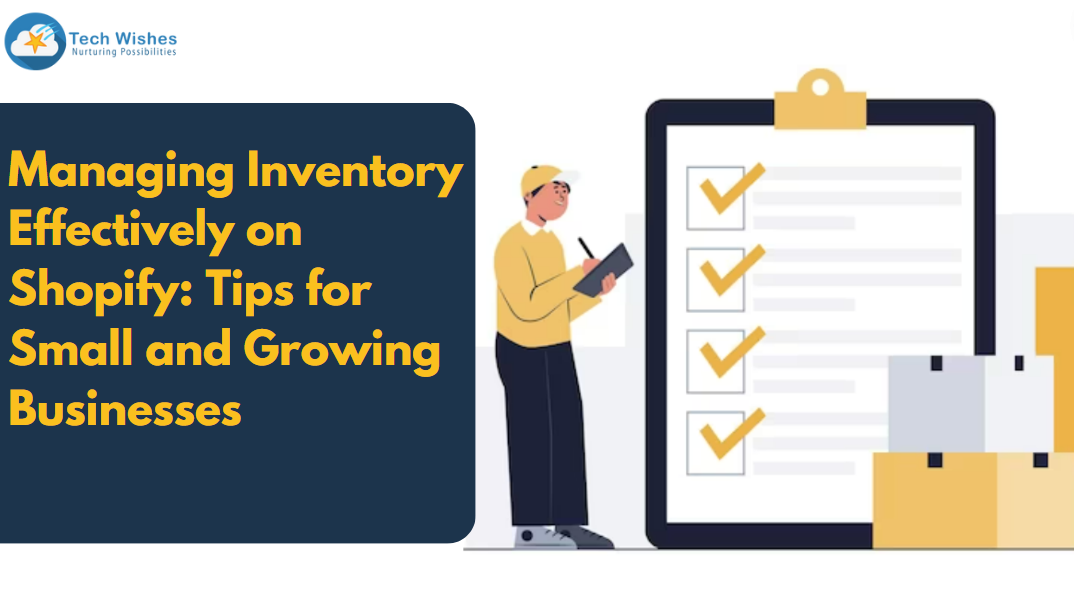
Managing Inventory Effectively on Shopify: Tips for Small and Growing Businesses
Shopify Inventory Management is all about controlling inventory to reduce delays, overstocking and unhappy customers. As a business owner, you don’t want to accept orders that are out of stock this leads to unhappy customers and stress for you as an owner.
Let’s understand this in-depth
Inventory management on Shopify encompasses the strategies employed to regulate inventory levels, minimise expenses, and oversee stock requisites. Though it predominantly pertains to physical products, digital items can also be subject to inventory control when there's a desire to provide a restricted quantity of a specific digital product.
The primary objective is to trim down the expenses of maintaining inventory while guaranteeing consistent stock levels and expedited deliveries. For numerous merchants, inventory management involves finding the equilibrium between ensuring a continual availability of stock without excess inventory or product wastage.
What are some benefits of Shopify inventory management?
- Good inventory management lets you track not only what products are available but also each variant. In this way, you know exactly what’s selling, what’s not and what you’re out of.
- You can change the quantities of products easily
- After successfully monitoring your inventory, you can inform customers promptly about product unavailability. This not only prevents overselling but also presents opportunities. By adding alerts to products with limited stock, you create a sense of urgency among buyers, motivating them to make a purchase sooner.
As the leading Shopify agency, we have worked with over 200 clients in various domains. Connect with us today to optimise your Shopify store.
Also Read - Effective E-commerce Marketing Strategies for Shopify Store Owners
Tips for streamlining inventory
- Regular audits- regularly conducting internal audits is an effective way of inventory management. This helps identify any issues, track inventory, and spot any discrepancies.
- Set reorder points- set the minimum quantity of a stock before reordering. This helps avoid stockouts, making sure you can fulfil customer orders always.
- ABC analysis- using this analysis you can classify your products into 3 categories- A (high value, low quantity), B (moderate value, moderate quantity) and C (low value, high quantity). This allows you to prioritise, products falling under the category ‘A’ while being flexible for category ‘C’ products.
- Invest in an inventory management system- consider purchasing software to manage your inventory that can integrate with your Shopify store. These tools help automate many tasks like sending restock alerts, detailed reports, tracking inventory levels, and many more. By doing this you can save time, energy and reduce human errors.
- FIFO or LIFO-FIFO (First In, First Out) and LIFO (Last In, First Out) are contrasting inventory management methods. FIFO advocates for utilizing older items before newer ones, emphasizing the principle of consuming the oldest stock first. This approach ensures that products in inventory are sold or used in the order they were acquired, promoting efficiency and minimizing the risk of obsolescence.
- Product velocity- this refers to the rate at which a product is sold over a specific time. Understanding popularity and demand is crucial and it can help with inventory management. Products with high velocity should be ordered more frequently and those with low velocity should be should be evaluated.
- Use safety stock- safety stock is the buffer inventory held to meet expected demand. It acts as a safety net for unexpected demands and fluctuations. This reduces the risk of stockouts and ensures you meet customer expectations.
- Multi-channel inventory system- if you are a business and you sell across different platforms and have physical stores then multi-channel inventory is essential. You want to seamlessly sync all your inventory levels across all channels. This is to maintain consistency, prevent overselling and avoid discrepancies across platforms.
- Supplier relations- Cultivating robust ties with your suppliers can result in mutual advantages. Engage in negotiations to secure advantageous terms, including bulk discounts, expedited lead times, and flexible payment options. Strengthening relationships with suppliers can contribute to maintaining optimal inventory levels, diminishing carrying costs, and enhancing your ability to adapt to dynamic market conditions.
- Analyse data- historical data gives us a lot of invaluable insights into product performance. You can identify trends, seasonal patterns and peak selling periods. Based on this you can adjust your inventory, prepare for future demands and avoid overstocking or stockouts.
Final thoughts
Effective management of your Shopify inventory is crucial for your store's success. By adopting best practices and employing appropriate tools, you can uphold optimal stock levels, avoid stockouts, and enhance the overall shopping experience for your customers.
With streamlined inventory processes, your e-commerce venture is positioned for lasting success. It's essential to recognize that inventory management is an ongoing task, demanding continuous monitoring and adjustments as your business progresses. By consistently applying these strategies and staying attuned to your inventory requirements, you can sustain efficiency in operations and surpass customer expectations.
Work with the best Shopify team and increase your conversions.